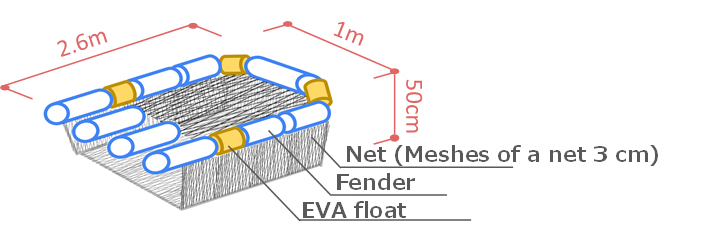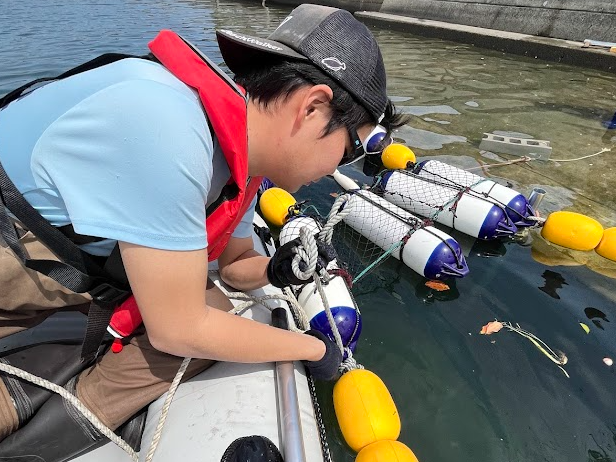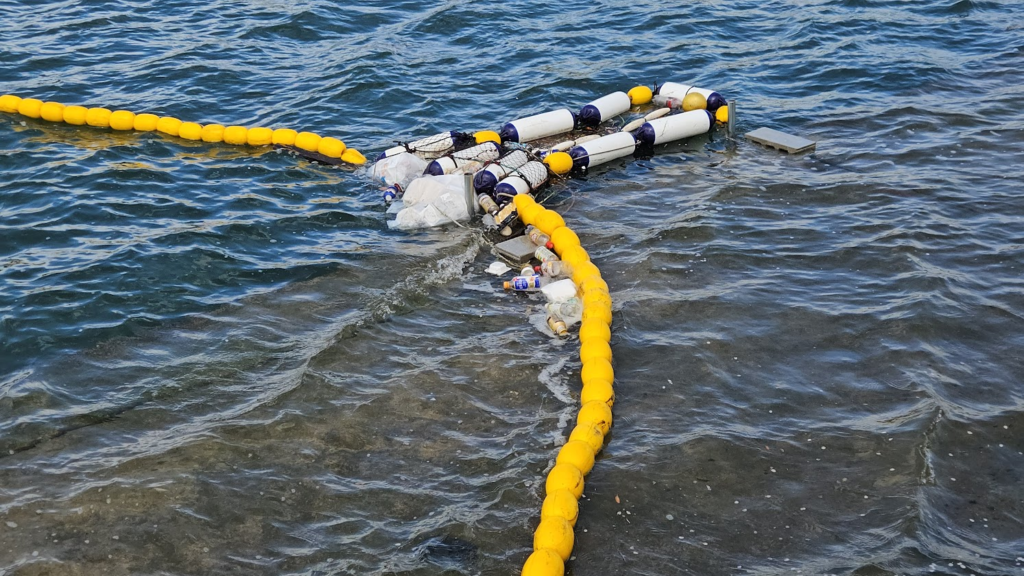The importance of recovering river waste
The “ocean,” inseparable from our lives, now faces a serious waste problem. Plastic waste, in particular, has a profound impact on the marine ecosystem, with much of it remaining undecomposed and continuing to drift in the ocean. In recent years, “rivers” have been highlighted as a source of marine waste. In fact, it is reported that 80-90% of marine plastic waste originates from land, much of which flows into the ocean through rivers [1]. Furthermore, according to a report by The Ocean Cleanup, small to medium-sized urban rivers account for approximately 80% of the world’s river-derived plastic emissions into the ocean [2]. From this, it can be concluded that addressing the issue of “urban rivers” is the most effective way to fundamentally solve the marine plastic problem. Rivers are the “passageways” for waste generated inland to reach the ocean. Controlling this “entry point” enables more efficient and cost-effective prevention of marine waste outflow.
Therefore, we developed a unique recovery device with the theme of “how to effectively recover waste generated and flowing into rivers.” This column introduces the mechanism of this device and the demonstration experiment we conducted in an urban river.
Explanation of the Recovery Device
The name of our developed recovery device is “kawasemi* 001”. The kingfisher, a beautiful blue bird that inhabits mountain streams, is known as the “Gem of the mountain stream,” capturing prey by hovering over the water and diving into it. The exterior of this device incorporates the blue color used in our organization’s logo and is designed to efficiently and reliably capture waste while harmonizing with the forces of nature. With the hope that this device will become a “blue bird carrying hope” towards a future of zero marine waste, we decided on this name.
Kawasemi*: The kingfisher
(1) Recovery device specifications (kawasemi 001)
Waste flowing from upstream is blocked by the wing, guided to the recovery pocket, and collected in the recovery pocket. The structure prevents re-outflow.
| Size | 15 m in width Recovery Pocket: 2.6 m long x 1.0 m wide |
| Water Level Compatibility | 0 cm to 50 cm water depth |
| Recovery Method | V-shaped guide + recovery pocket |


(2) Overall (From above)

(3) The state of the installation work

The distinctive feature is the “V-shaped guide design” that uses the water flow to direct waste to one point. In order to minimize the impact on aquatic life, the V-shaped guide efficiently captures and guides floating objects [3], and the project also takes advantage of the river current to help aquatic life escape, with consideration given to the river environment.
About Recovery Activities
With the support of many companies, we conducted a five-day recovery experiment from April 12th (Saturday) to April 16th (Wednesday), 2025, at the Tsumeta river in Takamatsu City, Kagawa Prefecture.
On the morning of April 12th (Saturday), we installed the recovery device in the river and collected waste from the recovery pocket in the center of the device once a day. The wet weight of the collected waste was 5.55 kg (wet) on the first day (April 13th, Sunday), 1.05 kg (wet) on the second day (April 14th, Monday), 6.65 kg (wet) on the third day (April 15th, Tuesday), and 6.30 kg (wet) on the fourth day (April 16th, Wednesday), with a total recovery amount of 19.55 kg. In addition to typical waste such as plastic bottles, plastic bags, and polystyrene foam, we also collected two 45-liter Takamatsu City trash bags of unexpected trash, which appeared to have been blown into the river from a nearby waste station. One notable observation during the waste collection was its unexpected diversity. Furthermore, while marine waste is often fragmented and deteriorated due to the effects of waves and ultraviolet rays, the river waste, such as trays and plastic bottles, was relatively clean in appearance and retained its original form. It became clear that it is important to collect plastic waste before it decomposes and becomes difficult-to-recover microplastics. Analyzing the obtained waste in this way revealed problems and issues in the area, providing an opportunity for awareness and learning.
(1) Collection Pocket

(2) Measurement of the weight of collected waste

Summary
The “kawasemi 001” we developed may still be a small device in the experimental stage. However, in just five days after installation, it was able to recover 19.55 kg of river waste, demonstrating the potential to reliably reduce the amount of waste flowing out and raise environmental awareness in the community through the accumulation of daily activities. This effort has limitations with the power of our organization alone. We believe that a sustainable future can be built by the cooperation and support of local governments, companies, and citizens.


To hand over the richness of the ocean to the future, we will continue to focus on rivers, the “Entrance” to the marine plastic problem, and remain active on the ground. If you are interested in getting involved in these activities, please feel free to contact us. It would be wonderful if a small step could eventually become a great wave and change the course of the world!!
References
[1] Gallo, F.; Fossi, C.; Weber, R.; Santillo, D.; Sousa, J.; Ingram, I.; Nadal, A.; Romano, D. Marine Litter Plastics and Microplastics and Their Toxic Chemicals Components: The Need for Urgent Preventive Measures. Environ. Sci. Eur. 2018, 30 (13). https://doi.org/10.1186/s12302-018-0139-z.
[2] Meijer, L. J. J.; van Emmerik, T.; van der Ent, R.; Schmidt, C.; Lebreton, L. More than 1000 Rivers Account for 80% of Global Riverine Plastic Emissions into the Ocean. Sci. Adv. 2021, 7 (18), eabf5803.
https://doi.org/10.1126/sciadv.aaz5803
[3] Sugianto, E.; Chen, J.-H. Hollow Wing Technique to Enhancing Conveyor Performance on Marine Debris Collection. Evergreen 2022, 9 (4), 1160–1167.
https://doi.org/10.5109/6625727.
Author: Tomoaki Inoue, Yusaku Muroya, Shogo Ishiyama, Masatoshi Nakakuni
